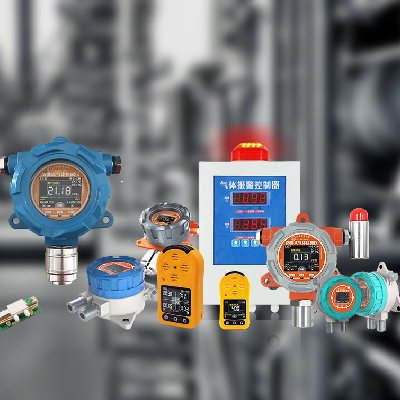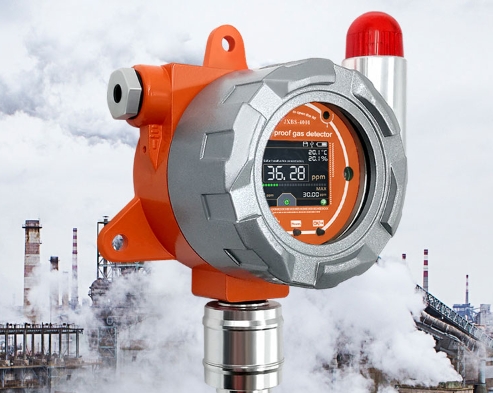Flammable gas detector are indispensable devices designed to monitor and detect the presence of combustible gases in various environments. These detectors play a crucial role in ensuring the safety of individuals and property, particularly in industrial settings . Understanding the significance and working principles of flammable gas detectors is fundamental to appreciating their role in preventing potential hazards and safeguarding human health and the environment.

Working Principles of Flammable Gas Detector
Flammable gas detector operate on various working principles, each designed to detect the presence of combustible gases with precision and reliability. The most common types of flammable gas detectors include catalytic bead sensors, infrared (IR) sensors, semiconductor sensors, photoionization detectors (PID), and flame ionization detectors (FID).
Catalytic bead sensors function based on the principle of combustion. They consist of a platinum wire coil coated with a catalyst that promotes the oxidation of flammable gases. When a combustible gas comes into contact with the catalyst, it undergoes a chemical reaction, releasing heat and increasing the temperature of the platinum wire. This rise in temperature is detected by the sensor, triggering an alarm to indicate the presence of the flammable gas.
Infrared gas sensor utilize the absorption of infrared radiation by gas molecules to identify the presence of flammable gases. These sensors emit a beam of infrared light that passes through the surrounding air. When a combustible gas is present, it absorbs specific wavelengths of the infrared light, causing a reduction in the intensity of the transmitted light. The sensor measures this reduction, indicating the presence of the flammable gas.
Semiconductor sensor function based on the changes in electrical conductivity when exposed to flammable gases. They consist of a semiconductor material that conducts electricity. When a combustible gas interacts with the semiconductor, it alters the material’s conductivity, resulting in a change in the electrical resistance. This change is detected by the sensor, prompting an alarm to warn of the gas presence.
Photoionization detector (PID) operate by ionizing gas molecules using ultraviolet light. When a flammable gas is present, the gas molecules absorb the ultraviolet light, causing them to ionize and release electrons. The sensor measures the current generated by these released electrons, providing a reading of the gas concentration and triggering an alarm if it exceeds the predefined threshold.
Applications of Flammable Gas Detectors

Flammable gas detector find extensive applications in a wide range of settings, including industrial, commercial, and residential environments, as well as in environmental monitoring. In industrial settings, such as gas facilities, chemical plants, and manufacturing facilities. flammable gas detectors are critical for ensuring the safety of workers, preventing potential fires and explosions, and complying with safety regulations. These detectors are also used in residential and commercial spaces, to protect occupants from the hazards of natural gas leaks or other flammable gases. Additionally, flammable gas detectors are employed in environmental monitoring applications, such as in landfills and wastewater treatment plants, to detect and prevent the release of harmful gases into the atmosphere.
Importance of Flammable Gas Detectors in Safety
The significance of flammable gas detector in safety cannot be overstated. These devices play a pivotal role in preventing fires and explosions, protecting human health and the environment, and ensuring compliance with safety regulations and standards. By promptly identifying the presence of flammable gases, flammable gas detectors enable early intervention and mitigation of potential hazards, thereby reducing the risk of catastrophic incidents and minimizing the associated impact on lives and property. Furthermore, the use of flammable gas detectors is essential for maintaining a safe working environment in industrial settings and for safeguarding the well-being of individuals in residential and commercial spaces.
Factors to Consider When Choosing a Flammable Gas Detector
When selecting a flammable gas detector, several factors should be taken into account to ensure its suitability for the intended application. These factors include sensitivity and detection range, maintenance requirements, environmental conditions (such as temperature and humidity), cost, and ease of installation. The sensitivity and detection range of the detector should align with the specific gases to be monitored and the concentration levels of concern. Additionally, the maintenance requirements of the detector, including calibration and sensor replacement, should be manageable within the operational context. Environmental conditions, such as temperature and humidity, can impact the performance of the detector and should be considered during selection. Cost and ease of installation are also important factors, particularly for organizations with budget constraints and limited resources for deployment and maintenance.
Conclusion
Flammable gas detectors are indispensable tools for ensuring safety in hazardous environments. By understanding the working principles of these detectors, their applications, and the factors to consider when choosing them, individuals and organizations can make informed decisions to enhance safety and mitigate potential risks associated with flammable gases. The importance of flammable gas detectors in safety cannot be overstated, and their continual advancement and innovation hold promise for further improving hazard detection and prevention. As technology continues to evolve, flammable gas detectors will play an increasingly vital role in safeguarding human health, protecting the environment, and minimizing the impact of potential disasters.
